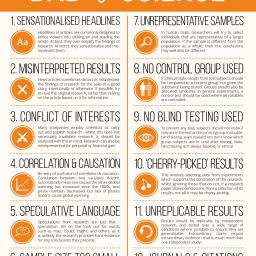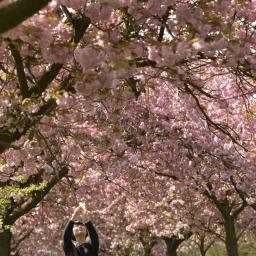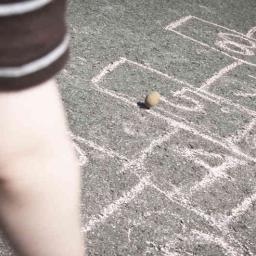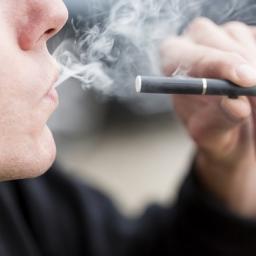 Compound Interest
Compound Interest , a chemistry blog, has posted an
infographic guide to spotting bad science. Among the listed things to watch out for are perennial favorites "Correlation & Causation" and "Sample Size Too Small".
The author was inspired to create the guide after running into so many of these gotchas while doing online research for a different article. It is in no way intended to be comprehensive, but instead to act as a brief reminder of what things to be alert for when reading science news articles and research results.
Guides like this might be overly simple for the readership of a site like Pipedot, but I personally find them useful as refreshers, much as I do the excellent TechNyou video series
"Critical Thinking" and
"This Thing Called Science" which, though aimed at high-schoolers and below, are still a good foundational resource. Then again, I like bright colors and shiny objects.

Widely reported this week is a phenomenon that has taken the scientific community by storm. In November 2008, 265 cherry stones (seeds) were sent to the ISS by Japan. They came back to Earth in July the following year. Some were sent for laboratory tests, but most were ferried back to their places of origin, and a selection was planted at nurseries near the Ganjoji temple.
By April this year, the "space cherry tree" had grown to around four metres (13 feet) tall, and suddenly produced nine flowers, each with just five petals, compared with about 30 on flowers of the parent tree. It normally takes about 10 years for a cherry tree of the similar variety to bear its first buds. Cross-pollination with another species could not be ruled out, but a lack of data is hampering an explanation for the early bloom.
Says a Miho Tomioka, a spokewoman for the project's organizer :
The seeds were sent to the ISS as part of an educational and cultural project to let children gather the stones and learn how they grow into trees and live on, after returning from space. We had expected the (Ganjoji) tree to blossom about 10 years after planting, when the children come of age.
Read more at the
Japan Times ,
Engadget , or
Discovery .
[Ed. note: Discovery is also running an article on
how to have sex in space . Tech journalism isn't what it used to be.]

Wired has an interesting article about a new company,
Goldiebox , who is making
science and engineering toys targeted to young girls . Apparently, this new direction in play-education was not supported by the conventional toy industry, but through crowd-funding Goldiebox was able to break into the mass market and is going like gang-busters. Interesting quote from the CEO: "A lot of the men in the toy industry have daughters, and many of them are tired of what they have to offer their daughters, too."
 An abstract of a study released by the US Centers for Disease Control and Prevention
An abstract of a study released by the US Centers for Disease Control and Prevention found that the study's "2010 [Autism Spectrum Disorder] prevalence estimate of 14.7 per 1,000 (95% CI = 14.3-15.1), or one in 68 children aged 8 years, was 29% higher than the preceding estimate of 11.3 per 1,000 (95% CI = 11.0-11.7), or one in 88 children aged 8 years in 2008." Of the sites surveyed, four counties in New Jersey had the highest prevalence estimate, with 21.9 per 1,000 (95% CI = 20.4-23.6).
National Public Radio quotes CDC experts that
"skyrocketing estimates don't necessarily mean that kids are more likely to have autism now than they were 10 years ago." "It may be that we're getting better at identifying autism," says , director of the CDC's National Center on Birth Defects and Developmental Disabilities.
Researchers say intervention in early childhood may help the developing brain compensate by rewiring to work around the trouble spots.
Another abstract of a "small, explorative study" from
The New England Journal of Medicine describes Patches of Disorganization in the Neocortex of Children with Autism and suggests "a probable dysregulation of layer formation and layer-specific neuronal differentiation at prenatal developmental stages." CBS News
demystifies the study as "brain abnormalities may begin in utero." Cross-submitted by the author at Soylent News.Surgeons at the UPMC Presbyterian Hospital in Pittsburgh, Pennsylvania, will try to save the lives of patients with knife or gunshot wounds by
placing them in suspended animation , buying time to fix injuries that would otherwise be lethal to them.
The technique involves replacing all of a patient's blood with a cold saline solution, which rapidly cools the body and stops almost all cellular activity. At lower temperatures, cells need less oxygen because all chemical reactions slow down. This explains why people who fall into icy lakes can sometimes be revived more than half an hour after they have stopped breathing.

A small study done by
The Center for Tobacco Control Research and Education at The University of California, San Francisco,
suggests that e-cigarettes don't actually help people to quit smoking." Of the 949 smokers in the study, only 88 used e-cigarettes, causing the study's researchers to "admit that their findings should be viewed with some caution."
World Science reports
"They also found that e-cigarette use was more commmon among women, younger adults and people with less education." Last year, the US Centers for Disease Control
reported e-cigarette use more than doubled among U.S. middle and high school students from 2011-2012. The lack of solid research, potential youth market, and abundance of caution have had anti-tobacco activists and researchers pushing for a ban on advertising of e-cigarettes.
NPR has a recently story about
vaping, or using e-cigarettes, indoors and in the workplace. If you smoke, have you been able to cut back your smoking or quit thanks to electronic cigarettes? If you do not smoke, does it bother you that others use e-cigarettes indoors?

Lithium Ion batteries are a big deal: they are used in smartphones, laptops, and many other electronic gadgets, as well has electric and hybrid vehicles. But they're a bigger deal when hybrid vehicle producer Tesla gets involved. The sheer size of electric vehicle batteries makes Tesla potentially one of the largest consumers of the world's natural graphite production; some analysts estimate that the opening of the Tesla gigafactory will double the world's demand for graphite.
But that graphite might soon be in short supply. Bloomberg recently reported that the material commonly used for the anode of those batteries -
graphite - will soon be in short supply because of environmental issues. Graphite mining and processing has produced substantial air and water pollution in China, leading authorities to close dozens of mines and processing plants in Shandong province. (China currently produces the
vast majority of the world's supply of natural graphite; other countries, including Australia and Canada, could potentially ramp up to take up a portion of the slack).
But building Li-Ion batteries for Tesla is causing the politicians to sit up and take notice. At present, four southwestern American states vie to be selected as the
site of Tesla Motor's announced 'Gigafactory' , a 1000-acre factory for lithium-ion batteries projected to cost $5 billion and support 6500 local jobs.
Tesla CEO
Elon Musk quickly tweeted that the Bloomberg story was 'beyond ridiculous' and promised to post an environmental impact blog. After a week, the proposed statement has still not been posted.
Some researchers at Cornell University have been studying the way fruit flies respond to gusty winds. They've found that the wing neurons are able to react without input from the brain to more quickly respond to changing wind conditions. Reported by the
New York Times : "Whatever the fly neurons are doing, they have the right stuff. The wings of fruit flies beat about 250 times a second. Disturb a fly's flight in an extreme way, Dr. Cohen said, and 'within three wing beats that sucker has recovered completely.'"
The research papers can be found
here and
here .
Scientists working with the powerful BICEP (Background Imaging of Cosmic Extragalactic Polarization) telescopes at the South Pole may have
just discovered evidence of the Big Bang Theory that has been sought since the 1970s . Observing the light of 13.8 billion years ago, the team of astronomers, led by John Kovac of the Harvard-Smithsonian Center for Astrophysics, have detected
gravitational waves (ripples in the fabric of space-time).
These gravitational waves have long been theorized but never observed, and provide strong evidence of a theory of cosmology called
Inflation , in which the Big Bang led to an instantaneous inflation of the universe and expansion at speeds that surpass the speed of light. Astrophysicists have been trying to find convincing evidence of the theory for 35 years.
Says the New York Times, "If corroborated, Dr. Kovac's work will stand as a landmark in science comparable to the recent discovery of dark energy pushing the universe apart, or the Big Bang itself." They add:
Confirming inflation would mean that the universe we see, extending 14 billion light-years in space with its hundreds of billions of galaxies, is only an infinitesimal patch in a larger cosmos whose extent, architecture and fate are unknowable. Moreover, beyond our own universe there might be an endless number of other universes bubbling into frothy eternity, like a pot of pasta water boiling over.
We live in amazing times.
 Compound Interest , a chemistry blog, has posted an infographic guide to spotting bad science. Among the listed things to watch out for are perennial favorites "Correlation & Causation" and "Sample Size Too Small".
Compound Interest , a chemistry blog, has posted an infographic guide to spotting bad science. Among the listed things to watch out for are perennial favorites "Correlation & Causation" and "Sample Size Too Small".




